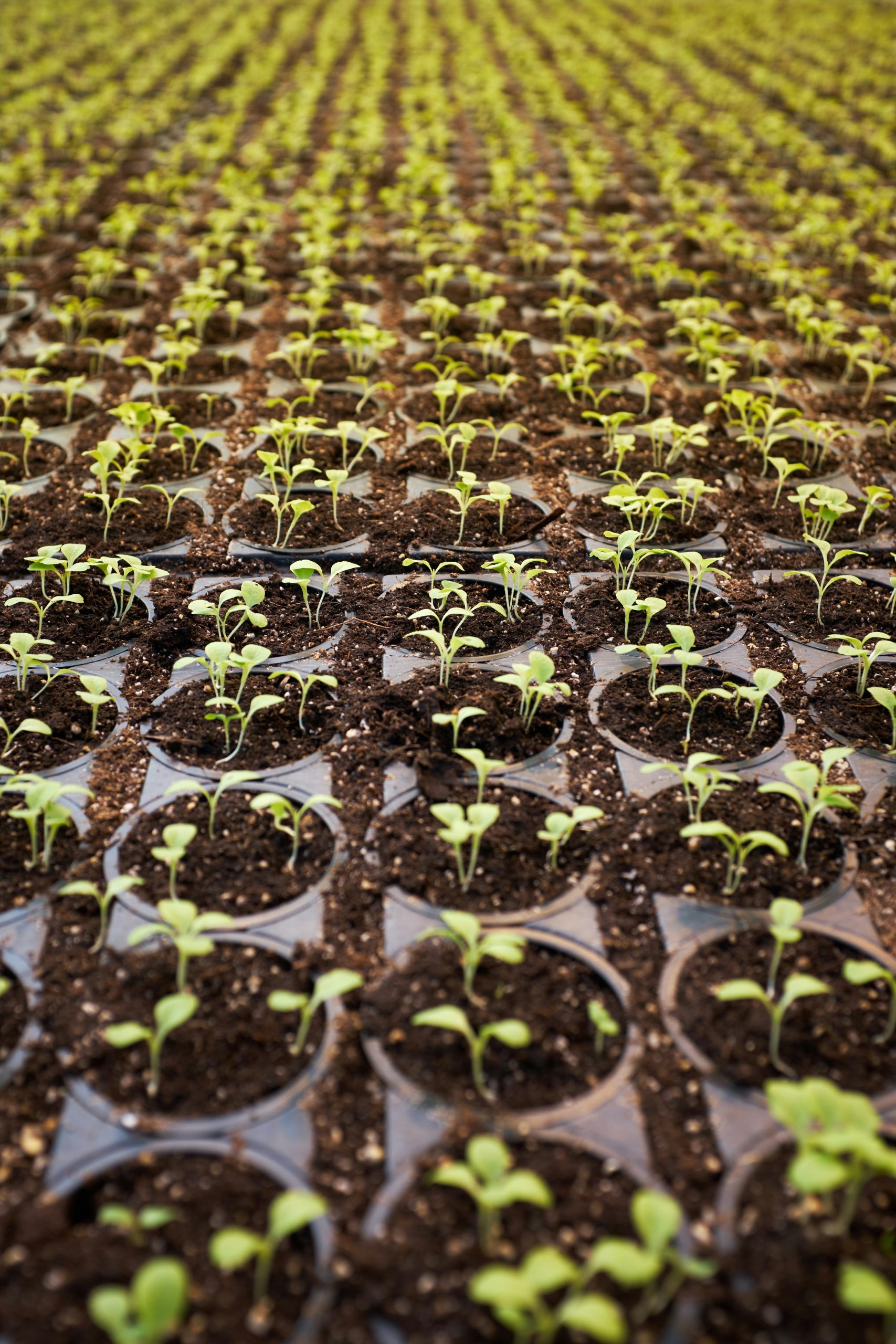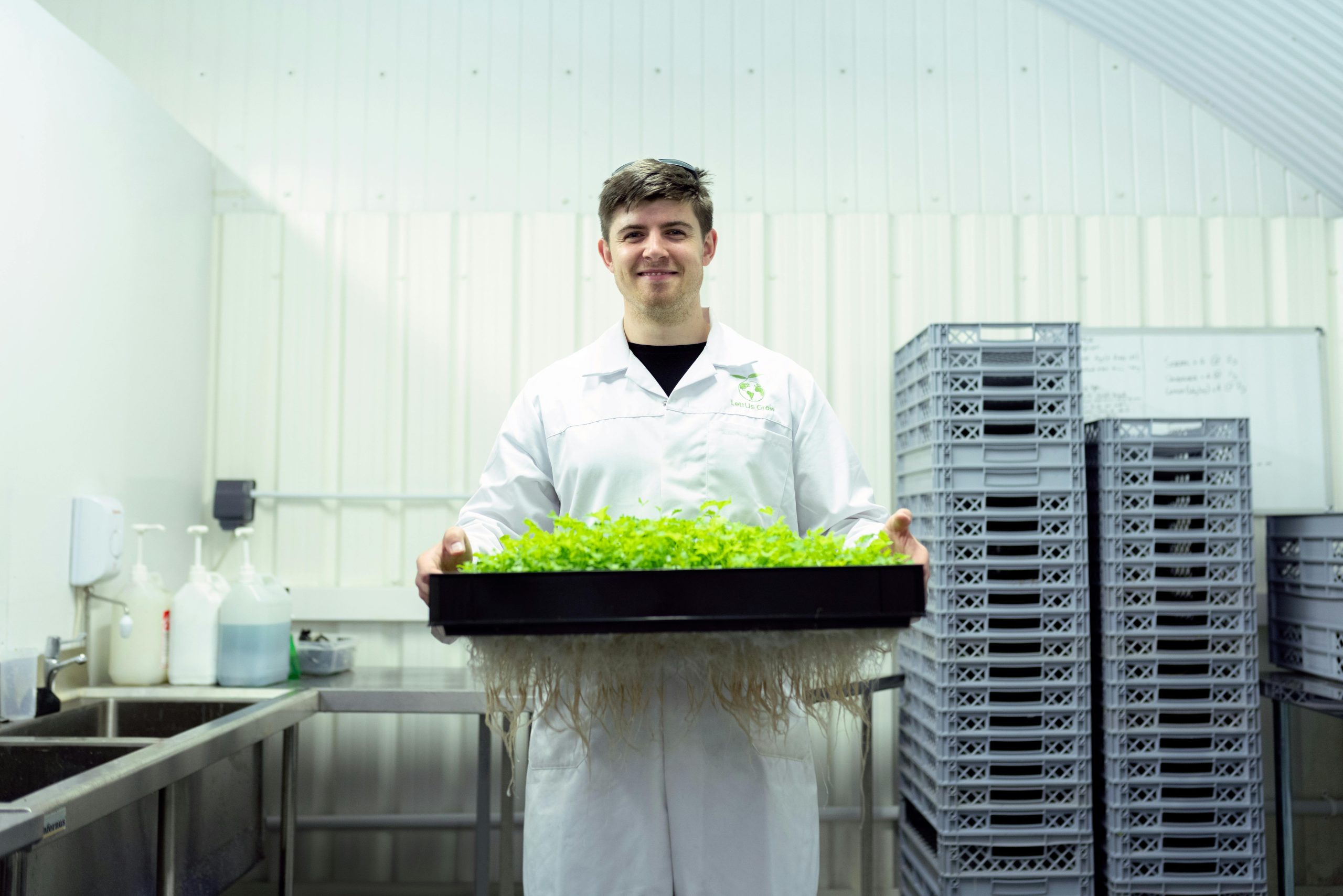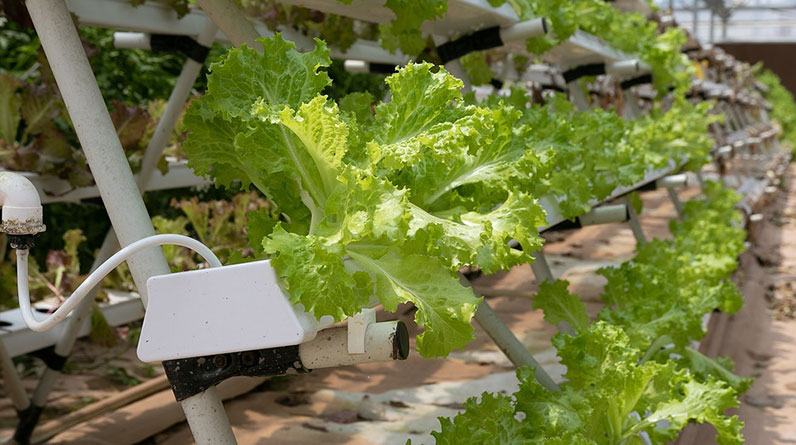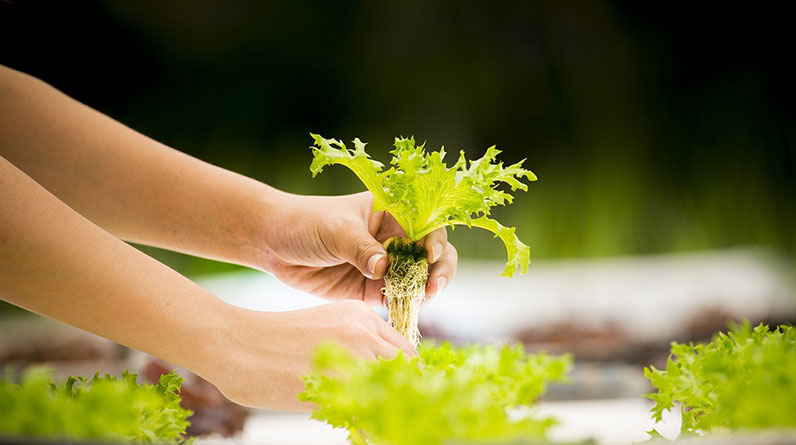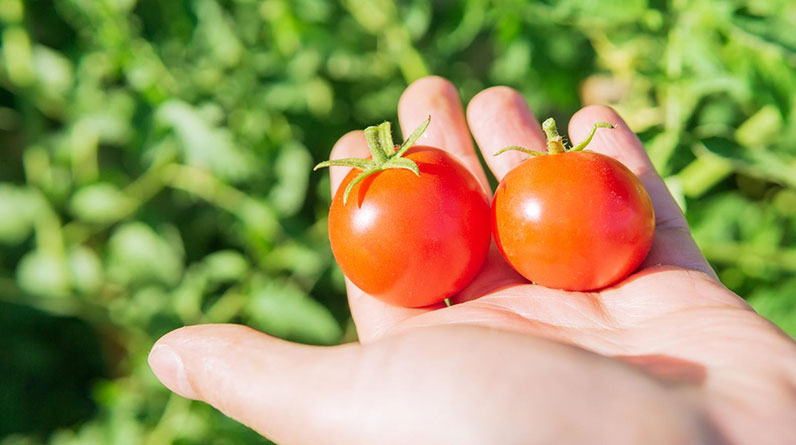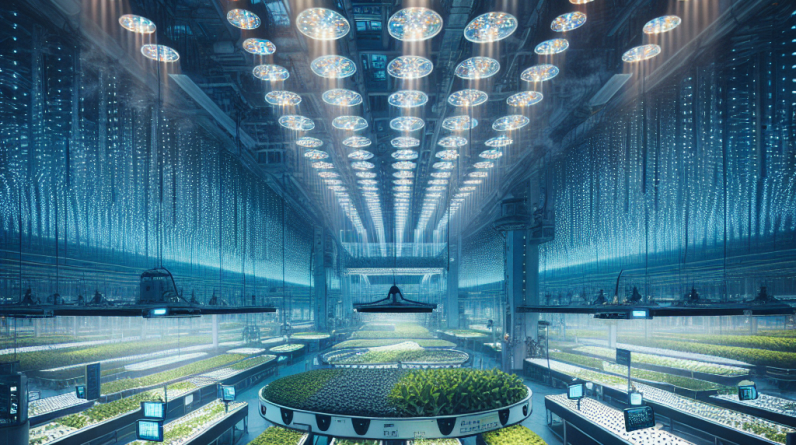
Hydroponics: The Foundation of Soil-Free Farming
What is Hydroponics?
Hydroponics is truly fascinating. Essentially, it’s a method of growing plants without using soil, instead relying on nutrient-rich water. For years, I was skeptical about the idea, thinking soil was an essential component of farming. But once I started to dive into hydroponics, I realized it opens up a world of possibilities.
The beauty of hydroponics lies in its efficiency. Plants can grow faster, and you can maximize space significantly. I’ve seen small setups in homes that yield a surprising amount of produce in just a few square feet. Imagine fresh herbs or vegetables right in your kitchen!
Hydroponics also helps in conserving water. Since it’s a closed system, there’s much less waste compared to traditional farming. This efficiency is not just about saving water, it’s about sustainability, and I find that really inspiring.
Types of Hydroponic Systems
There are several systems to choose from, each with its own strengths. Nutrient Film Technique (NFT) is one of my favorites. It allows a thin film of nutrient solution to run over the roots, offering them constant nourishment with minimal water.
Another popular method is Deep Water Culture (DWC). This is where plants’ roots hang in a nutrient-rich solution while being oxygenated by bubbles. It’s fun to see how quickly plants thrive in this environment. Just be mindful; it requires careful monitoring!
Lastly, I can’t skip mentioning aeroponics, where the roots are suspended in air and misted with a nutrient solution. It’s a bit advanced but incredibly effective, often used in larger commercial setups.
The Benefits of Hydroponics
One of the biggest perks I’ve enjoyed is having greater control over the growing conditions. You can adjust the nutrient levels and pH, which means you typically get better quality produce. Each bite from your home-grown veggies just tastes that much better.
Another fabulous benefit is the absence of weeds and pesticides. Since you control the environment, there’s less chance of pests and diseases invading. This means I can be pretty laid-back about garden maintenance, which is a win in my book!
Lastly, since crops grow faster in a hydroponic system, I can enjoy the fruits of my labor sooner. There’s something deeply rewarding about eating food you’ve nurtured from seed to table within weeks instead of months.
Aeroponics: The Future of Farming
What is Aeroponics?
Aeroponics is like the superhero of the soil-free world! While hydroponics uses water, aeroponics relies on mist. I was blown away the first time I saw a vertical aeroponic farm; the setup looked futuristic!
This method allows plants to absorb nutrients without being submerged in water. Instead, their roots dangle in the air, getting all the goodness they need through fine mist. This not only saves water but also ensures that each plant gets equal attention.
It’s exciting to think about how this technology could revolutionize farming by allowing us to grow food in locations previously deemed unsuitable. Urban environments or places with poor soil quality can become lush green spaces.
The Advantages of Aeroponics
Aeroponics offers rapid growth rates, sometimes up to 50% faster than traditional methods! I find that incredible. Plants thrive on the perfect balance of moisture, and I’ve seen a noticeable difference in crop yield.
Then there’s efficiency. There’s much less water used in comparison to hydroponics, thanks to the closed-loop mist system. You seriously feel like a climate hero when you think about water conservation.
Plus, the potential for growing in tighter spaces is mind-blowing. In urban centers where land is at a premium, aeroponics can provide fresh produce right where people live. And as someone who loves supporting local produce, this is super important!
Getting Started with Aeroponics
If you’re considering jumping into aeroponics, start small. A simple DIY aeroponic setup can be made using everyday materials. I began my journey with a basic bucket system and quickly learned the ropes about misting and nutrient management.
Don’t forget to research the ideal plant types for aeroponics. Leafy greens do exceptionally well, and herbs like basil and mint thrive too. These not only grow faster but add a fantastic flavor to your dishes.
Finally, make sure to maintain your system. Constantly monitor the nutrient levels, misting frequency, and overall plant health. It’s a little work, but the reward of growing your own fresh food is totally worth it!
Vertical Farming: Making the Most of Limited Space
Understanding Vertical Farming
Vertical farming has become a game-changer for urban gardening. The idea is straightforward: you stack layers of plants vertically, maximizing space. I remember visiting a vertical farm and being astounded by how much produce could be grown in a tiny footprint!
Using controlled environments enhances growth rates. Whether it’s hydroponics or aquaponics, these systems incorporate technology that creates optimal conditions. All of this contributes to a fresh, constant supply of fruits and veggies.
This method is especially savvy for those in cities where outdoor space is limited. I’ve discovered that no longer do you need a sprawling garden; you can create your own food oasis right in your apartment!
The Impact of Vertical Farming
The environmental benefits of vertical farming are huge! You’re reducing the carbon footprint by cutting down transportation needs. Fresh produce can be grown right where it’s consumed, and that excites me!
Plus, it cuts down on pesticide use. With a controlled environment, there’s often less need for harmful chemicals, making the food healthier to eat, which is always top of mind for me.
Not to mention, vertical farming has the potential to feed growing populations in urban areas. It’s innovative approaches like this that give me hope in finding solutions for food security.
Tips for Starting Your Own Vertical Farm
If you’re keen to explore vertical farming, begin by assessing your space. Even a small nook can be transformed into a vibrant vertical garden. I started with a simple shelf unit and created levels for my pots.
Choose plants wisely. Leafy greens and herbs are often the best choices for home setups since they’re easy to care for and have quick growing cycles. Plus, they add a delightful touch to salads and cooking.
Finally, invest in grow lights if you’re indoor gardening. They significantly boost growth rates and allow you to adapt to any space. My herbs flourish all year round, regardless of the outside season!
Community Gardening: A Social Approach
The Power of Community Gardens
Community gardens are such a rewarding experience. It’s not just about growing food; it’s about growing relationships. When I joined a local garden, I loved connecting with neighbors and sharing tips.
These gardens typically use soil-free methods for efficiency. Pooling resources and knowledge makes it easier for everyone to succeed. Plus, there’s something special about communal work; the camaraderie is immeasurable!
I’ve seen community gardens transform neighborhoods, bringing a sense of pride and belonging. It feels great to work towards a common goal while learning from each other’s experiences.
Benefits of Joining a Community Garden
Joining a community garden can bring back that love for gardening if you’ve lost touch. Working alongside others reignites that connection with nature, reminding us of our food sources.
Community gardens also enhance local biodiversity. By mixing different plants and approaches, you’re playing a role in creating a more sustainable ecosystem. It’s nice knowing you’re part of something bigger!
And let’s be real—sharing the harvest is one of the coolest parts. You can enjoy the fruits of your collective labor and share recipes and ideas. Plus, who doesn’t love free veggies?
Getting Involved with Your Local Community Garden
To get involved, look for local initiatives in your area. Many urban centers encourage community gardening, and I found it through social media. It’s a fantastic opportunity to meet like-minded individuals.
Once you find a community garden, take the time to learn about their rules and expectations. Every garden operates differently, and it’s vital to respect the common guidelines while working towards your personal goals.
Lastly, don’t hesitate to get your hands dirty! The experience you gain will be invaluable, whether it’s growing skills, new friendships, or simply enjoying nature—it’s all worth it!
Conclusion: A Soil-Free Future
In conclusion, the soil-free alternative to traditional farming is more than just a trend; it’s a vital evolution in how we will grow food in coming years. I’ve witnessed firsthand the benefits of hydroponics, aeroponics, vertical farming, and community gardening, transforming not just how we grow but how we engage with our environment.
Embracing these methods opens doors to sustainability, efficiency, and community. Plus, the joy of growing your own food in any space is unparalleled. We have the tools and knowledge to take our food sources into our own hands, and I couldn’t be more excited about it!
FAQs
1. What is the primary advantage of soil-free farming?
The primary advantage is efficiency. Soil-free farming methods, like hydroponics and aeroponics, allow for faster growth rates, reduced water usage, and the ability to grow in limited spaces.
2. Can I start hydroponics at home easily?
Absolutely! You can set up a simple hydroponics system for your kitchen or balcony. All you need is some basic equipment, nutrient solutions, and seeds.
3. What types of plants are best for aeroponics?
Leafy greens, herbs, and some small fruiting plants like strawberries perform remarkably well in aeroponic systems due to their rapid growth and adaptability.
4. How does community gardening benefit the neighborhood?
Community gardening fosters relationships among residents, promotes local biodiversity, and provides fresh produce, making neighborhoods healthier and more engaged.
5. Is vertical farming expensive to start?
It can be, but there are many DIY options that keep costs low. Starting small with shelving units, lights, and basic containers can help maintain budget-friendly techniques.
Related Content
- Hydroponics: A Solution for Limited Water Areas
- Indoor Farming Innovations: Explore Hydroponics
- The Ultimate Guide to the Best Indoor Hydroponic System for 2025
- Eliminating Soil-Borne Diseases in Hydroponic Vegetable Gardening
- The Ultimate Guide to Hydroponic Greenhouse Setup in 2025: Top Strategies & Tips




